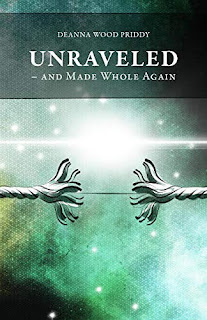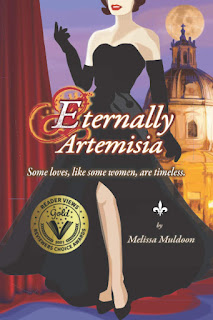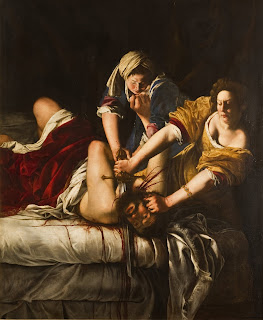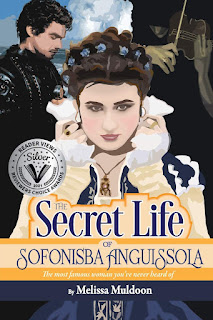Weekly Reader: Darkness Awaits (Virtus Academy Book 2) by Jamila A. Stone; Confusing Horror Volume With Two Interesting Leads
By Julie Sara Porter
Bookworm Reviews
Spoilers: Jamila A. Stone's Darkness Awaits is the second book in her Virtus Academy series. It has many of the same flaws that a second volume in a series often contains: a confusing plot which is made to continue from the first volume but requires the Reader to remember or have read the first volume to follow, too many characters with their own storylines but not enough interest in following them, and a fast pace that doesn't allow the Reader to grasp fully what is going on.
However the book does give us a great pair of leads in two young powerful witches that have to use not only whatever magic they have to bring several feuding supernatural clans together but their love and trust in each other and their friends to survive the various attacks on them.
The plot such as can be discerned involves various gangs and clans of witches, vampires, and werewolves who battle each other. Similar to the five Mafia families in the Godfather, they have at best a tempestuous resolution in which they don't attack each other on occasion but even the smallest argument could set them off against each other and leave many creatures and humans in their wake.
The main characters are a motley crew of different supernatural creatures, vampires, werewolves, a professor who is half banshee,
and so on. Even though this is a tight group of friends, ancient family rivalries and love triangles abound to make these characters fly off the handle and attack each other. The majority of the characters are teenagers with raging hormones, but also possess supernatural abilities to go with those raging hormones so even a slight argument could result in a few subsequent days of recuperation.
The main protagonists are Alexandra Aurelius and Nat King, witches who are members of powerful families. Alex has just become the head of her powerful wealthy coven of witches instead of her wayward self centered mother, Brenda. Nat is the daughter of Samantha King, a human mayor who has the unenviable task of keeping not only her human constituency but her supernatural one in line. Nat and Alex have a very close friendship despite their being polar opposites. Nat is the more outgoing open one who has a flirtatious sexual relationship with a vampire, Hamilton. Alex is quieter and more reserved and has an intimate relationship with the possessive Rachel. Nat and Alex are the only decent characters in an otherwise lackluster book.
One of the concerns with the book are the various subplots that are interwoven through the book but are not balanced very well. Sometimes it's hard to tell who is who and what exactly their concern is. Sometimes a character appears like Quentin, a vampire with a tie to one of the older vampires but aside from knowing that he was the vampire that made him, we aren't given more development than that. Nat and Alex's female friends Olivia, Leslie, and Eleanor alternate being friends and vying against other characters and themselves for unexplained reasons. The effect seems like Mean Girls With Fur and Fangs.
It doesn't help that the book is so fast paced and so jumbled with various conflicts that after a while it is hard to follow and hard to care about what happens. There are mentions of organizations like Order of the Light and the Incari that leave no time to tell who they are or why we should care about them in the overall scheme of things. This is one of the books that practically cries out for a "Previously on..." Prologue to keep the Reader up to date.
Some characters go through changes in personality with very little explanation. Brenda, Alex's mother goes from being an irresponsible childish idiot, to a manipulative puppet master, to a loving devoted mother with very little reason for her change in personality. One chapter she is willing to put her daughter through a potentially dangerous and fatal procedure to ensure that the Aurelius family line is intact and the next she is begging the others to save her with no reason for this change in character (except maybe she's manipulating them).
One of the more irritating character changes involves something that happens to Alex. For spoiler's sake, I won't reveal what it is but it's something that leaves her naturally horrified and violated over what was done. Then she becomes glurgy, maternal, and forgiving with scant mention over how this turn of events came about. It's a betrayal against a character who was left more or less assaulted and even her author won't let her realistically come to terms with it. Instead it seems to be a dangerous wish fulfillment that at least should not have transpired the way that it did.
The one saving grace is in the characters of Nat and Alex. They make effective leaders and are able to balance out their wilder friends. The two young women show their gifts in leadership particularly in the chapter where Alex addresses her shadowy coven members and is declared leader and also where Nat acts as go between among the diverse groups and her mother.
The two also have a very close friendship in which they bounce off each other, have similar goals, and fight side by side. They are like many close friends in fiction. They make a terrific duo that are so compelling that the Reader hopes that they end up together. Then just when the Reader thinks that it won't happen, it does!
Despite the various other subplots that move too fast, Nat and Alex's romance is handled surprisingly well. There are hints even beforehand such as when Rachel accuses Alex of having more than a friendship with Nat. Also, the two have private feelings for each other that borders on erotic. Their romance is a slow burn that by the time they do get together, it's actually a perfect resolution to the tension that we already knew. It's a relief for all of those fictional same sex friends who we paired in the past to find two that actually do get together.
It gets to the point that if the book had just been about them,,it might have been better. But instead, they are the center of various characters and plots that make no sense.
Perhaps, this book might have been more understandable with Book One but authors should do more to draw Readers in no matter which volume they are reading. Instead, The Virtus Academy is a missed opportunity of confusion and dangled plots with a loving same sex relationship between two interesting characters if you look close enough.







